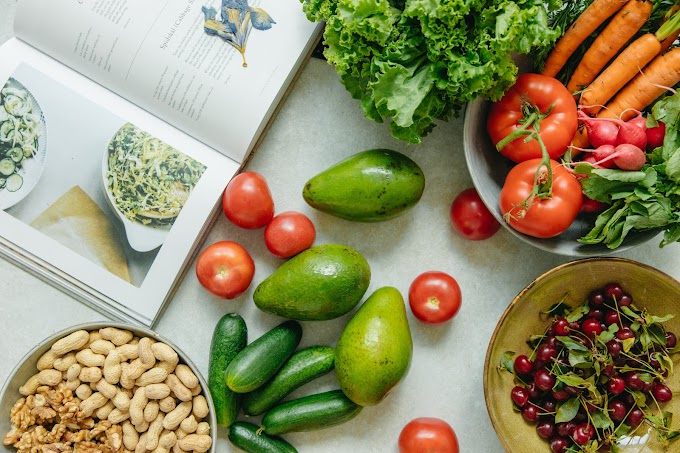Cheese is a pricey ingredient with a significant environmental impact, so throwing it out can make you feel guilty.
However, even a scraping of cheese can be beneficial because it adds umami and saltiness to whatever you're preparing.
The cheeses we will explore here are those that are most frequently bought and squandered. Keep in mind that cheese is a really versatile food. Most soft cheeses can be swapped out for other soft cheeses, and the same is true for hard cheese. Additionally, you can frequently substitute soft cheese with hard cheese. It's acceptable to substitute ricotta for Parmesan or cheddar for brie when serving pasta. Just use common sense.
Very. Much Flavor. Blue cheese can genuinely rift a family because of its simultaneously metallic and floral scent with a whiff of armpit. Blue cheeses come in a variety of spiciness levels, although they are rarely regarded as mild. Blue cheese is typically purchased in smaller quantities so there is less danger of waste, but occasionally the majority of the blue cheese is left on the cheese platter after a dinner party, leaving you wondering what to do with it.
Storage Blue cheese should be kept in the more humid section of your refrigerator, such as the vegetable crisper, tightly wrapped in baking paper to prevent drying out. The duration is three to four weeks.
What to do with it
It tastes especially good in cauliflower soups. Crumble it over any dish that contains cauliflower, including cauli-salad or freshly roasted cauliflower straight from the oven.
Combine pear slices, blue cheese crumbles, and torn radicchio in a salad.
For a flavor experience, crumble it over roasted grapes.
With a glass of wine, eat a toast made with blue cheese and slices of ripe pear.
dressing with blue cheese
creates 200 ml
This traditional dressing is flavorful and thick, and it pairs well with bitter greens like radicchio, endive, or rocket. You may also sprinkle it on baked potatoes, steak, or roasted Brussels sprouts. In place of the traditional buttermilk that is used to make blue cheese dressing, we substitute ordinary milk and add a squeeze of lemon juice.
To begin, sour a quarter cup (60 ml) of milk with a generous squeeze of lemon juice. Let it stand for a few minutes or until lumps start to form in the milk. Use a food processor or hand blender to combine the milk, 30 to 50 grams of blue cheese, 120 grams of mayonnaise, 1/8 teaspoon of Dijon mustard, and a touch of salt and pepper. together quickly.
Having some ooey, buttery brie or Camembert around the house is rather thrilling, don't you think? Even a tiny piece may elevate a meal.
Every Saturday morning, sign up for the good stuff with our roundup of essential reading, popular culture, and weekend advice. Avoid using plastic when storing soft cheeses like brie and Camembert because they require airflow. Refrigerate for no more than three to four days after wrapping in baking paper.
What to do with it
Pop on top of quartered figs or stone fruits and grill for one to two minutes. Alternatively, drizzle honey over the top and serve as a dessert or breakfast item.
Toss the creamy portion with soft lettuce leaves and nuts in a salad after removing the rind.
You won't be sorry if you add it to the omelette you make tonight.
Use the rind that has been removed in cheese sauce, Welsh rarebit, or our odd-knobs mac and cheese (see below for the recipe).
French toast with brie and jam
Makes 1
It almost seems too good to be true, but here we are. Although you won't be eating it frequently (your doctor has ordered it, by the way), when you do, it's worth postponing all other plans and fully savoring the moment.
Butter the outside and inside of two slices of sourdough bread. On one side of each slice, spread a thick layer of jam (berry jams work especially well for this Liberace of sandwiches). Slices of brie or Camembert should be placed on one side of the jam, followed by the other slice with the jam side up. Melt one tablespoon of butter in a frying skillet over medium heat. To make the sandwich golden, crispy, and melty, fry it for two to three minutes on each side.
Cheddar is a sharp cheese with hints of sweetness and salt and a sour finish. It is likely the most popular aged cheese found in refrigerators. These traits become more noticeable the more developed it is. Most of the time, cheddar is a fantastic all-purpose cheese for things like sandwiches, pizzas, cheese sauces, baking, and more.
Storage For up to three weeks, keep in a tight container on the top shelf of the refrigerator.
What to do with it
Use it as a Parmesan rind by adding it to a soup or stock that is cooking if it has dried out and been left in the refrigerator. It will taste fantastic.
Use to top a shepherd's pie or cottage pie by grating and combining with mashed potatoes.
Yes, please, make toast with marmalade and cheddar.
Greetings, cottage cheese. Since the 1980s, you've been a touch out of style, but we assume people are still purchasing you since we already do. The most often used fresh cheese, cottage cheese has a tangier flavor than most and a lumpy texture from the huge curds. It can be used as the creamy component of a dish or meal because it has a very high protein content and little fat.
Storage Continually store cottage cheese in its original container and tightly fasten the lid. Cottage cheese will last for approximately a week if kept in this manner. Cottage cheese can be kept frozen for up to three months if it has not been opened.
What to do with it
Make a dip out of it as the base. Combine in a blender with herbs, cucumber or avocado that has been seeded, plenty of salt, pepper, and a squeeze of lemon juice.
Use cottage cheese in place of the cream cheese to create a less creamy version of Alex's tartar sauce (recipe is below).
In place of buttermilk in baking and pancakes, mix a little milk with cottage cheese to make it runny. In a lasagna or as a topping for pizza, combine with grated mozzarella.
Use as a garnish on roasted potatoes.
Spread and pickled cucumber are placed on rye crackers.
cheese, cream
Without cream cheese, bagels are almost inconceivable in our opinion. It often comes in a block or tub, and thanks to its mild flavor, it may be utilized in both sweet and savory dishes. Even a teaspoon can give recipes a richer flavor; it can also be incorporated into polenta or cooked grains.
Storage Take a smell and assess if it's still good one to two days after the use-by date. Discard if in doubt. If you put the lid on tightly, opened cream cheese will keep for about a week in the refrigerator.
What to do with it
Pork meatballs with a generous amount added will yield a homemade Swedish meatball.
Place stuffed jalapenos on a baking sheet and cook them until they are browned.
Before scrambling the eggs, add two to three teaspoons.
Construct a cream cheese frosting. About 125g of cream cheese should be whipped with a fork until it is smooth and creamy. Add two tablespoons of icing sugar, a drop of vanilla extract, and lots of lemon zest and juice.
It goes without saying that this goes well with homemade fish and chips and fishcakes, but it also pairs well with roast potatoes and celery stalks for dipping.
Put a half-cup (120g) of cream cheese or cottage cheese, two tablespoons of finely chopped dill, chives, and capers, along with two tablespoons of caper brine, in a food processor. Add a drizzle of olive oil, a squeeze of lemon juice, a pinch of pepper or cayenne pepper, and process until smooth. until smooth, blend. If you don't want to bother getting the food processor out, you may alternatively do this by hand. If it has to be loosened, add some waters.
And yes that brings us to end of this wonderful recipe. Hope you like it.










.png)
.png)



